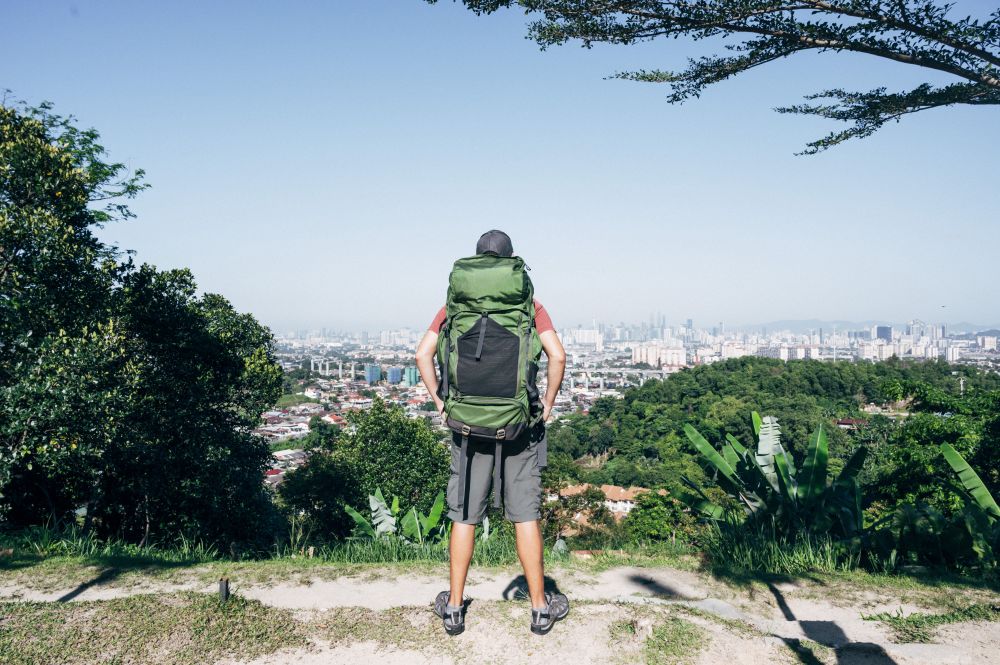The digital nomad | the future of business

Travelling the world used to mean quitting your day job. But more and more jobs can now be done from anywhere. Even before Covid-19, workplaces around the world were embracing remote work. In the tech sector, big names like Stripe, Toggl, GitLab and Zapier were already fully distributed companies, meaning staff are allowed to work from anywhere in the world. And a 2017 study in the US found that the ability to work flexibly from anywhere was increasingly important to employees. With Covid-19 keeping millions of us out of the office and working from home, the appeal of the digital nomad life has only grown.
“Our cramped one-bed flat just isn’t worth it,” says Sophie, 29. “My partner and I won’t be back in the office until at least January 2021, so we’ve decided to break our lease and go to Bali instead of Balham. We’ll travel to new places each week, while holding down our old jobs. All you need is wi-fi.”

Why become a digital nomad?
There are many reasons to become a digital nomad, but popular reasons include work-life balance (73%), greater freedom (68%) and love of travel (55%) according to Hobo With A Laptop.
What’s the difference between remote work and digital nomadism?
Being location independent is different from being a digital nomad. Location independence means you can work from anywhere. You choose a base - whether that’s Manchester, Melbourne or Manila – and stay for some time. A digital nomad, by contrast, moves from place to place.
Where are popular spots for digital nomads?
Where good wi-fi connections, natural beauty and low cost of living intersect, you tend to find hubs for digital nomads. Bali, Chiang Mai in Thailand, parts of Mexico and Portugal are all popular places.
If you’re looking for a longer-term stay, Barbados’ Welcome Stamp, Estonia’s Digital Nomad visa and Bermuda’s residential certification could be for you. These year-long visas allow remote workers to swap their kitchen table for a snowy cabin or a palm-fringed beach café.
How to take the plunge
We asked digital nomads how they made it work:
Freelance? Figure out your finances
“I moved to Thailand (because I heard it was affordable for nomads) and, at first, I worked five or six days a week. As I figured out my living costs and built up my client list, I worked out exactly how much I needed to sustain my lifestyle. Now I can work just two or three days a week, and I love my lifestyle” says freelance translator Mattias.
Or if you’re employed, use a cost of living calculator to see how far your salary will stretch.
Do your due diligence
It’s easy to fall in love with white-sand beaches, lush jungle or misty mountains, but you need to look beyond Instagram-ability. Sites like Nomad List can help you compare important factors – from how safe a city is to how well the weather will suit you.
Join a network
“I took the leap into digital nomadism after a long term relationship ended and I was going to disappear to Nepal and teach English and tend goats” says Keeley, founder of Comet Copywriting. “A friend offered to take me to a network meeting after I was rambling about wanting to write, and suggested I tried copywriting. Nine months later here I am with a job at an Amazon Marketing Company and my own freelance business. My advice would be to get involved in a networking group to find those initial contacts and grow relationships, and to visualise where you want to work and what you want to write.”
If there are no associations or networking groups for your industry, try finding like-minded professionals on Facebook or Meet-Up. Digital nomads like Location Indie can also be a great source of work (and travel) tips.
Reduce avoidable expenses
There’s no point shelling out back home while you’re travelling the world, so make sure to cancel avoidable expenses like gym memberships or pricey phone contracts.
Mix freelance work with employment
Dennis Relojo-Howell, the founder of psychology website Psychreg, finances his nomadic lifestyle with income from his social media platforms. “I have been blogging for 15 years now” he says, “but it was only two years ago when I decided to embark as a full-time blogger. Now, my blog and my YouTube channel are my main sources of income.”
His advice? Try transitioning gradually: “You don’t have to quit your current job straight away.” Building up freelance roles on the side can help make the shift easier.
And lastly, be sure to warn your friends: they’re going to be very jealous of all your travel photos.
This content has been created for general information purposes and should not be taken as formal advice. Read our full disclaimer.



